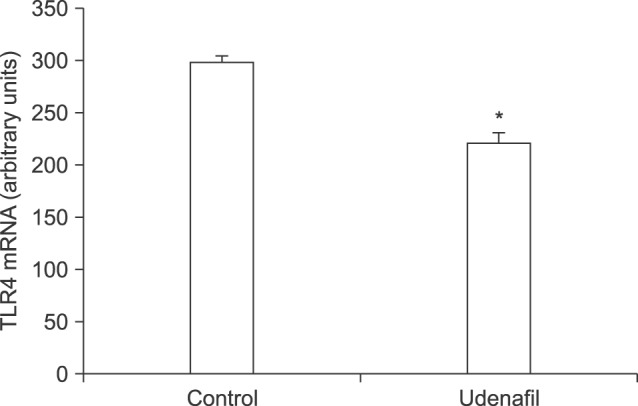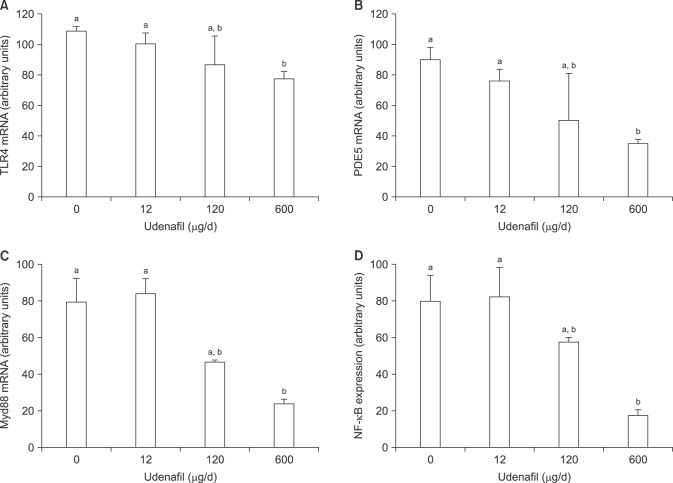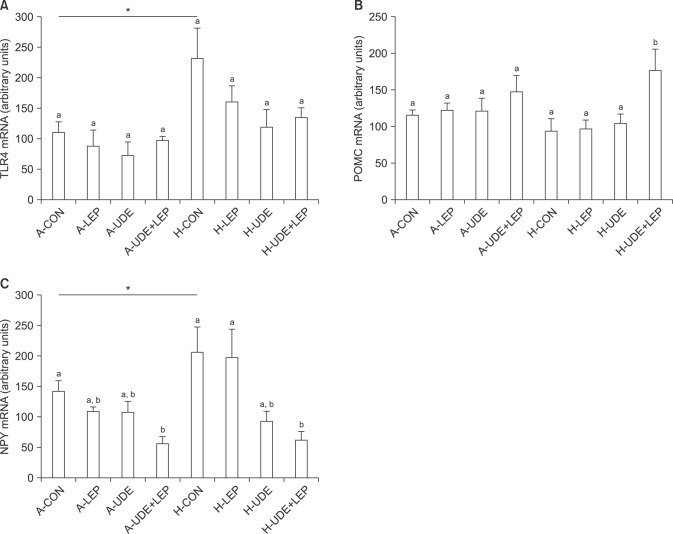1. Mozumdar A, Liguori G. Persistent increase of prevalence of metabolic syndrome among U.S. adults: NHANES III to NHANES 1999-2006. Diabetes Care. 2011; 34:216–219. PMID:
20889854.

2. Wisse BE, Schwartz MW. Does hypothalamic inflammation cause obesity? Cell Metab. 2009; 10:241–242. PMID:
19808014.

3. Milanski M, Degasperi G, Coope A, Morari J, Denis R, Cintra DE, et al. Saturated fatty acids produce an inflammatory response predominantly through the activation of TLR4 signaling in hypothalamus: implications for the pathogenesis of obesity. J Neurosci. 2009; 29:359–370. PMID:
19144836.

4. De Souza CT, Araujo EP, Bordin S, Ashimine R, Zollner RL, Boschero AC, et al. Consumption of a fat-rich diet activates a proinflammatory response and induces insulin resistance in the hypothalamus. Endocrinology. 2005; 146:4192–4199. PMID:
16002529.

5. Medzhitov R, Janeway C Jr. The Toll receptor family and microbial recognition. Trends Microbiol. 2000; 8:452–456. PMID:
11044679.

6. Aderem A. Role of Toll-like receptors in inflammatory response in macrophages. Crit Care Med. 2001; 29:S16–S18. PMID:
11445728.

7. Poulain-Godefroy O, Le Bacquer O, Plancq P, Lecoeur C, Pattou F, Frühbeck G, et al. Inflammatory role of Toll-like receptors in human and murine adipose tissue. Mediators Inflamm. 2010; DOI:
10.1155/2010/823486.

8. Scholtes VP, Versteeg D, de Vries JP, Hoefer IE, Schoneveld AH, Stella PR, et al. Toll-like receptor 2 and 4 stimulation elicits an enhanced inflammatory response in human obese patients with atherosclerosis. Clin Sci (Lond). 2011; 121:205–214. PMID:
21446916.

9. Shi H, Kokoeva MV, Inouye K, Tzameli I, Yin H, Flier JS. TLR4 links innate immunity and fatty acid-induced insulin resistance. J Clin Invest. 2006; 116:3015–3025. PMID:
17053832.

10. Milanski M, Arruda AP, Coope A, Ignacio-Souza LM, Nunez CE, Roman EA, et al. Inhibition of hypothalamic inflammation reverses diet-induced insulin resistance in the liver. Diabetes. 2012; 61:1455–1462. PMID:
22522614.

11. Siriwardhana N, Kalupahana NS, Fletcher S, Xin W, Claycombe KJ, Quignard-Boulange A, et al. n-3 and n-6 polyunsaturated fatty acids differentially regulate adipose angiotensinogen and other inflammatory adipokines in part via NF-κB-dependent mechanisms. J Nutr Biochem. 2012; 23:1661–1667. PMID:
22475809.

12. Liu HQ, Qiu Y, Mu Y, Zhang XJ, Liu L, Hou XH, et al. A high ratio of dietary n-3/n-6 polyunsaturated fatty acids improves obesity-linked inflammation and insulin resistance through suppressing activation of TLR4 in SD rats. Nutr Res. 2013; 33:849–858. PMID:
24074743.

13. Park NK, Choi YS, Lee JH, Kim HS, Kim JK, Ahn JH, et al. Effect of udenafil on MUC5B expression in human airway epithelial cells. Korean J Otorhinolaryngol-Head Neck Surg. 2013; 56:501–505.

14. Bacon CG, Mittleman MA, Kawachi I, Giovannucci E, Glasser DB, Rimm EB. A prospective study of risk factors for erectile dysfunction. J Urol. 2006; 176:217–221. PMID:
16753404.

15. Yu JY, Kang KK, Yoo M. Erectile potentials of a new phosphodiesterase type 5 inhibitor, DA-8159, in diet-induced obese rats. Asian J Androl. 2006; 8:325–329. PMID:
16625282.

16. Aleid M, Muneer A, Renshaw S, George J, Jenkinson AD, Adamo M, et al. Early effect of bariatric surgery on urogenital function in morbidly obese men. J Sex Med. 2017; 14:205–214. PMID:
28087357.

17. Moon KH, Ko YH, Kim SW, Moon du G, Kim JJ, Park NC, et al. Efficacy of once-daily administration of udenafil for 24 weeks on erectile dysfunction: results from a randomized multicenter placebo-controlled clinical trial. J Sex Med. 2015; 12:1194–1201. PMID:
25736397.

18. Kim YW, Kim JY, Park YH, Park SY, Won KC, Choi KH, et al. Metformin restores leptin sensitivity in high-fat-fed obese rats with leptin resistance. Diabetes. 2006; 55:716–724. PMID:
16505235.

19. Shim HJ, Kim YC, Jang JM, Park KJ, Kim DH, Kang KK, et al. Subacute toxicities and toxicokinetics of DA-8159, a new phosphodiesterase type V inhibitor, after single and 4-week repeated oral administration in rats. Biopharm Drug Dispos. 2003; 24:409–418. PMID:
14689469.

20. Kim DS, Cha HN, Jo HJ, Song IH, Baek SH, Dan JM, et al. TLR2 deficiency attenuates skeletal muscle atrophy in mice. Biochem Biophys Res Commun. 2015; 459:534–540. PMID:
25749338.

21. Rocha DM, Caldas AP, Oliveira LL, Bressan J, Hermsdorff HH. Saturated fatty acids trigger TLR4-mediated inflammatory response. Atherosclerosis. 2016; 244:211–215. PMID:
26687466.

22. Sharma R. Novel phosphodiesterase-5 inhibitors: current indications and future directions. Indian J Med Sci. 2007; 61:667–679. PMID:
18174638.

23. Handa P, Tateya S, Rizzo NO, Cheng AM, Morgan-Stevenson V, Han CY, et al. Reduced vascular nitric oxide-cGMP signaling contributes to adipose tissue inflammation during high-fat feeding. Arterioscler Thromb Vasc Biol. 2011; 31:2827–2835. PMID:
21903940.

24. Varma A, Das A, Hoke NN, Durrant DE, Salloum FN, Kukreja RC. Anti-inflammatory and cardioprotective effects of tadalafil in diabetic mice. PLoS One. 2012; 7:e45243. PMID:
23028874.

25. Ayala JE, Bracy DP, Julien BM, Rottman JN, Fueger PT, Wasserman DH. Chronic treatment with sildenafil improves energy balance and insulin action in high fat-fed conscious mice. Diabetes. 2007; 56:1025–1033. PMID:
17229936.

26. Kim ED, Seftel AD, Goldfischer ER, Ni X, Burns PR. A return to normal erectile function with tadalafil once daily after an incomplete response to as-needed PDE5 inhibitor therapy. J Sex Med. 2014; 11:820–830. PMID:
23841532.

27. Burns PR, Rosen RC, Dunn M, Baygani SK, Perelman MA. Treatment satisfaction of men and partners following switch from on-demand phosphodiesterase type 5 inhibitor therapy to tadalafil 5 mg once daily. J Sex Med. 2015; 12:720–727. PMID:
25615445.
28. Schwartz MW, Woods SC, Porte D Jr, Seeley RJ, Baskin DG. Central nervous system control of food intake. Nature. 2000; 404:661–671. PMID:
10766253.

29. Harrold JA. Hypothalamic control of energy balance. Curr Drug Targets. 2004; 5:207–219. PMID:
15058308.

30. Shim YS, Pae CU, Cho KJ, Kim SW, Kim JC, Koh JS. Effects of daily low-dose treatment with phosphodiesterase type 5 inhibitor on cognition, depression, somatization and erectile function in patients with erectile dysfunction: a double-blind, placebo-controlled study. Int J Impot Res. 2014; 26:76–80. PMID:
24285284.









 PDF
PDF ePub
ePub Citation
Citation Print
Print



 XML Download
XML Download